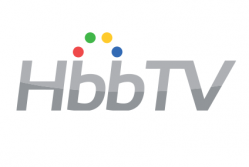The HbbTV Association, a global initiative dedicated to providing open standards for the delivery of advanced interactive TV services through broadcast and broadband networks for connected TV sets and set-top boxes, is pleased to announce the publication of the HbbTV specification for phase 2 of application discovery over broadband (abbreviated to ADB).
This specification has been developed for markets in which set-top boxes are extensively used for TV reception – potentially preventing consumers from accessing HbbTV services. The ADB feature enables consumers to access the HbbTV services on their TV sets, even when not supported by the set-top box. ADB phase 2 is suitable for all types of set-top boxes: cable and satellite as well as IPTV and OTT.
ADB phase 2 extends phase 1 with video and audio watermarking. When a compliant TV set receives the signal of a particular TV channel from the set-top box, it will discover via its broadband internet connection if there is an HbbTV app related to this particular channel and run that app. Further, the TV set will detect channel changes and other reasons for stopping the HbbTV app. The watermarks used in phase 2 also support synchronising the app to the TV image flow.
The extension employs watermarking technologies specified by ATSC, facilitating interoperability and benefiting manufacturers and broadcasters who can source and deploy technology components on a global basis.
ADB is a stand-alone, independent specification and not included in the core HbbTV specification. If it is widely picked up in the market by broadcasters and supported by manufacturers, it could be included in a future version of the core specification.
“We are very excited about this key advancement of the ADB specification as this opens a whole new and large market segment to HbbTV services,” said Vincent Grivet, Chair of the HbbTV Association. “It will further strengthen the leading role of HbbTV as the simple and effective technology to offer viewers attractive interactive services, independently of their TV reception situation, beyond the traditional direct broadcast situation which in certain key markets is not any longer the prevailing case.”

